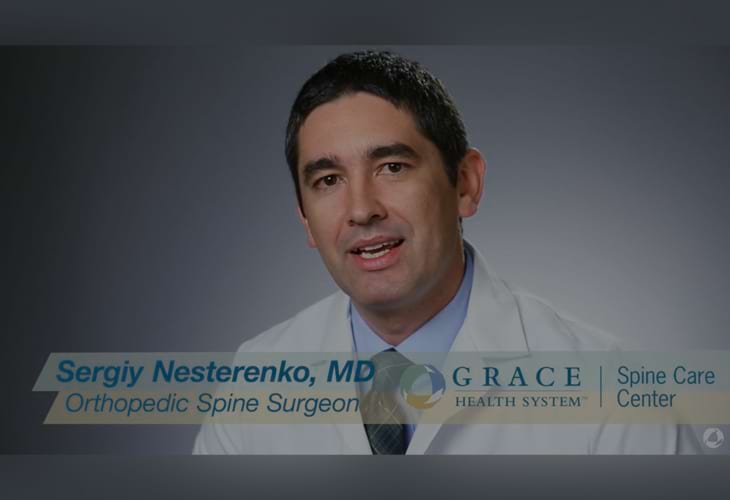
Let us Take Away Your Back and Neck Pain
I appreciate you trusting us with the treatment of your back or neck issues. Our team takes pride in offering personalized care to all of our patients. We will work together with you to find the best solution to ease your pain using the least invasive techniques possible.
Not every back or neck problem can be solved completely, but we promise to try to reduce your discomfort as much as possible. Our goal is to help you enjoy a better quality of life for years to come.
Sergiy Nesterenko, MD
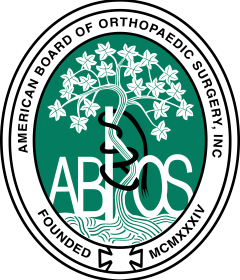
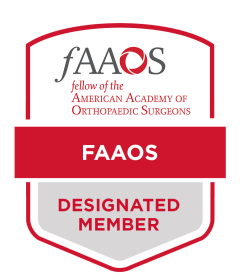
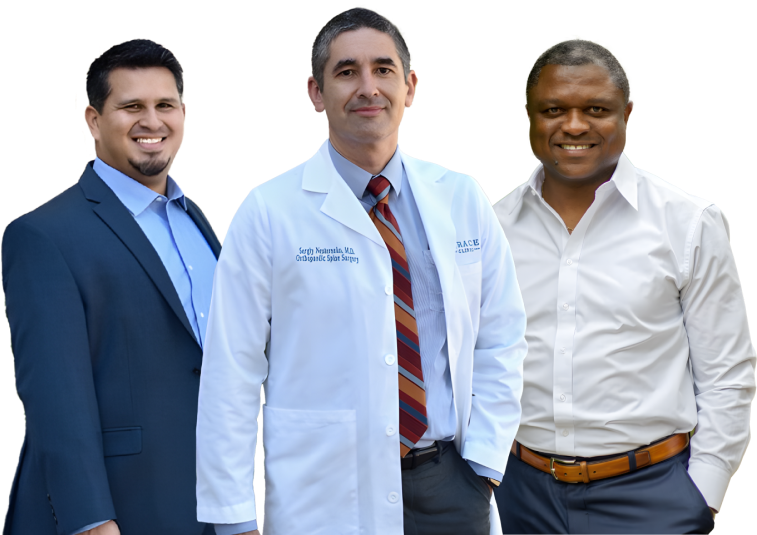
Dr. Nesterenko’s philosophy
A better quality of life through a higher standard of health careDr. Nesterenko is a fellowship-trained board certified orthopaedic spine surgeon.
Sixtus Z. Atabong is the practice manager and physician assistant for Grace Clinic Spine Care Center.
Edwin provides initial evaluation and ongoing care for patients with spine-related problems in coordination with Dr. Nesterenko.
FAQ
First appointment and interactions with the office-
Postoperative Instructions (ALIF)
Anterior Lumbar Interbody Fusion (ALIF)
Postoperative instructions
Most of your pain will last three to five days after surgery while inflammation subsides. Healing process takes two weeks for the wound and twelve weeks for bone. It may take up to a year for you to feel all benefits of surgery.
Here is the list of DOs and DON’Ts you should know for postoperative period:
DO
- Stay active, walk regularly to improve your muscle strength and balance and also to prevent blood clots and other complications of inactivity.
- It is okay to take shower on day 5 after surgery. Avoid the spray hitting the incision.
- While taking shower, cover incision with impermeable dressing and change it after the shower; keep incision open to air if no drainage.
- Watch for signs of infection including body temperature higher than 101, local redness or drainage. Call our office if develop any of those signs.
- Minimize use of narcotic medications (Hydrocodone, Oxycodone etc.) as soon as possible, since they lead to drowsiness, confusion, constipation and are addictive.
- It is okay to take Tylenol for pain – do not exceed 3 grams a day to avoid liver damage.
DON’T
- Remember: NO BLT!! for 3 months (no bending, no lifting anything heavier than 5 Lb, no twisting).
- Do not submerge incision in water until 2 days after removal of staples or 2 weeks after surgery if internal sutures were used.
- Absolutely NO tobacco products or nicotine-containing substitutes (chewing gums, patches etc.) for 3 months after surgery – it stops bone healing.
- Do not take NSAID’s (nonsteroidal anti-inflammatory drugs like Motrin, Aleve etc.) for 3 months since they may slow down bone healing.
- Do not drive or operate heavy machinery while on pain medications.
How to reach us:
During office hours (8am-5pm): 806-725-2740
After hours call 806-744-7223 and ask to connect you to Dr. Nesterenko’s team.
-
Postoperative Instructions (Laminoplasty)
Cervical Laminoplasty
Postoperative instructions
Most of your pains will last three to five days after surgery while inflammation subsides. Healing process takes two weeks for the wound and twelve weeks for bone. It may take up to a year for you to feel all benefits of surgery.
Here is the list of DOs and DON’Ts you should know for postoperative period:
DO
- Stay active, walk regularly to improve your muscle strength and balance and also to prevent blood clots and other complications of inactivity.
- It is okay to take shower on day 5 after surgery. Avoid the spray directly hitting the incision.
- While taking shower, cover incision with impermeable dressing and change it after the shower; keep incision open to air if no drainage.
- Watch for signs of infection including body temperature higher than 101, local redness or drainage. Call our office if develop any of those signs.
- Minimize use of narcotic medications (Hydrocodone, Oxycodone etc.) as soon as possible, since they lead to drowsiness, confusion, constipation and are addictive.
- It is okay to take Tylenol for pain – do not exceed 3 grams a day to avoid liver damage.
- It’s okay to drive if your neck pain is well controlled and you do not take narcotics.
- Wear soft collar for comfort early days after surgery.
DON’T
- Avoid excessive range of motion in the neck.
- Do not submerge incision in water until 2 days after removal of staples or 2 weeks after surgery if internal sutures were used.
- Absolutely NO tobacco products or nicotine-containing substitutes (chewing gums, patches etc.) for 3 months after surgery – it stops bone healing.
- Do not drive or operate heavy machinery while on pain medications.
How to reach us:
During office hours (8am-5pm): 806-725-2740
After hours call 806-744-7223 and ask to connect you to Dr. Nesterenko’s team.
-
Postoperative Instructions (Microdiscrectomy)
Microdiscectomy
Postoperative instructions
Most of your pain will last three to five days after surgery while inflammation subsides. Wound healing takes two weeks. It may take up to a year for you to feel all benefits of surgery.
Here is the list of DOs and DON’Ts you should know for postoperative period:
DO
- Stay active, walk regularly to improve your muscle strength and balance and to prevent blood clots and other complications of inactivity.
- It is okay to take shower on day 3 after surgery if there is no drainage. Avoid water hitting the incision.
- While taking shower, cover incision with impermeable dressing and change it after the shower; keep incision open to air if no drainage.
- Watch for signs of infection including body temperature higher than 101, local redness or drainage. Call our office if develop any of those signs.
- Minimize use of narcotic medications (Hydrocodone, Oxycodone etc.) as soon as possible, since they lead to drowsiness, confusion, constipation and are addictive.
- It is okay to take Tylenol for pain – do not exceed 3 grams a day to avoid liver damage.
DON’T
- Remember: “NO BLT!!” for 6 weeks (no bending, no lifting anything heavier than 5 Lb, no twisting); excessive activity may lead to recurrence of disc herniation.
- Do not submerge incision in water until 2 days after removal of staples or 2 weeks after surgery if internal sutures were used.
- Do not drive or operate heavy machinery while on pain medications.
How to reach us:
During office hours (8am-5pm): 806-725-2740
After hours call 806-744-7223 and ask to connect you to Dr. Nesterenko’s team.
-
Postoperative Instructions (LLIF)
Lateral Lumbar Interbody Fusion (LLIF)
Postoperative instructions
Most of your pain will last three to five days after surgery while inflammation subsides. Healing process takes two weeks for the wound and twelve weeks for bone. It may take up to a year for you to feel all benefits of surgery.
Here is the list of DOs and DON’Ts you should know for postoperative period:
DO
- Stay active, walk regularly to improve your muscle strength and balance and also to prevent blood clots and other complications of inactivity.
- It is okay to take shower on day 5 after surgery. Avoid the spray hitting the incision.
- While taking shower, cover incision with impermeable dressing and change it after the shower; keep incision open to air if no drainage.
- Watch for signs of infection including body temperature higher than 101, local redness or drainage. Call our office if develop any of those signs.
- Leave incision open to air if there is no drainage.
- It is okay to take Tylenol for pain – do not exceed 3 grams a day to avoid liver damage.
- Minimize use of narcotic medications (Hydrocodone, Oxycodone etc.) as soon as possible, since they lead to drowsiness, confusion, constipation and are addictive.
DON’T
- Remember: “NO BLT!!” for 3 months (no bending, no lifting anything heavier than 5 Lb, no twisting).
- Do not submerge incisions in water until 2 days after removal of staples or 2 weeks after surgery if internal sutures were used.
- Absolutely NO tobacco products or nicotine-containing substitutes (chewing gums, patches etc.) for 3 months after surgery – it stops bone healing.
- Do not take NSAID’s (nonsteroidal anti-inflammatory drugs like Motrin, Aleve etc.) for 3 months since they may slow down bone healing.
- Do not drive or operate heavy machinery while on pain medications.
How to reach us:
During office hours (8am-5pm): 806-725-2740
After hours call 806-744-7223 and ask to connect you to Dr. Nesterenko’s team.
-
Postoperative instructions (TLIF)
Spinal fusion (including TLIF)
Postoperative instructions
Most of your pain will last three to five days after surgery while inflammation subsides. Healing process takes two weeks for the wound and twelve weeks for bone. It may take up to a year for you to feel all benefits of surgery.
Here is the list of DOs and DON’Ts you should know for postoperative period:
DO:
- Stay active, walk regularly to improve your muscle strength and balance and to prevent blood clots and other complications of inactivity.
- It is okay to take shower on day 5 after surgery. Avoid water hitting the incision.
- While taking shower, cover incision with impermeable dressing and change it after the shower; keep incision open to air if no drainage.
- Watch for signs of infection including body temperature higher than 101, local redness or drainage. Call our office if develop any of those signs.
- Minimize use of narcotic medications (Hydrocodone, Oxycodone etc.) as soon as possible, since they lead to drowsiness, confusion, constipation and are addictive.
- t is okay to take Tylenol for pain – do not exceed 3 grams a day to avoid liver damage.
DON’T
- Remember: NO BLT!! for 3 months (no Bending, no Lifting more than 5 Lb, no Twisting)
- Do not submerge incision in water until 2 days after removal of staples or 2 weeks after surgery if internal sutures were used.
- Absolutely NO tobacco products or nicotine-containing substitutes (chewing gums, patches etc.) for 3 months after surgery – it stops bone healing.
- Do not take NSAID’s (nonsteroidal anti-inflammatory drugs like Motrin, Aleve etc.) for 3 months since they may slow down bone healing.
- Do not drive or operate heavy machinery while on pain medications.
How to reach us:
During office hours (8am-5pm): 806-725-2740
After hours call 806-744-7223 and ask to connect you to Dr. Nesterenko’s team.
-
Postoperative instructions (ACDF)
ACDF (Anterior Cervical Decompression and Fusion)
Postoperative instructions
Most of your pains will last three to five days after surgery while inflammation subsides. Sore throat lasts for about a week. Healing process takes two weeks for the wound and twelve weeks for bones. It may take up to a year for you to feel all benefits of surgery.
Here is the list of DOs and DON’Ts you should know for postoperative period:
DO:
- Stay active, walk regularly to improve your muscle strength and balance and to prevent blood clots and other complications of inactivity.
- It is okay to take shower on day 3 after surgery as long as there is no drainage. Avoid water directly hitting the incision.
- While taking shower, cover incision with impermeable dressing and change it after the shower; keep incision open to air if no drainage.
- Watch for signs of infection including body temperature higher than 101, local redness or drainage. Call our office if develop any of those signs.
- Minimize use of narcotic medications (Hydrocodone, Oxycodone etc.) as soon as possible, since they cause drowsiness, constipation and are addictive.
- It is okay to take Tylenol for pain – not more than 3 grams a day to avoid liver damage. Beware that Vicodin, Norco and Lortab contain Tylenol.
- It’s okay to drive if your pain is well controlled and you do not take narcotics.
- Wear soft collar for comfort early days after surgery.
DON’T:
- Avoid excessive range of motion in the neck.
- Do not submerge incision in water until 2 days after removal of staples or 2 weeks after surgery if internal sutures were used.
- Absolutely NO tobacco products or nicotine-containing substitutes (chewing gums, patches etc.) for 3 months after surgery – it stops bone healing.
- Do not take NSAID’s (nonsteroidal anti-inflammatory drugs like Motrin, Aleve etc.) for 3 months since they may slow down bone healing.
- Do not drive or operate heavy machinery while on pain medications.
How to reach us:
During office hours (8am-5pm): 806-725-2740
After hours line for surgical patients: 806-744-7223
-
Postoperative instructions (Sacroiliac joint fusion)
Sacroiliac joint fusion
Postoperative instructions
Surgical site pain typically lasts three to five days. Healing takes two weeks for the wound and twelve weeks for bones. It may take up to a year for you to feel all benefits of surgery.
Here is the list of DOs and DON’Ts you should know after surgery:
DO:
- Follow the instructions from physical therapy on partial weight bearing and use of a walker.
- Stay active and walk regularly to maintain your muscle strength and decrease the risk of blood clots.
- It is okay to take shower on day 3 after surgery as long as there is no drainage from the incision site. Don’t let water to directly hit the incision.
- While taking shower, cover the incision with an impermeable dressing and change it after the shower; keep incision open to air if no drainage.
- Watch for signs of infection including body temperature higher than 101, local redness or drainage. Call our office if develop any of those signs.
- Minimize use of narcotic medications (Hydrocodone, Oxycodone etc.) as soon as possible, since they cause drowsiness, constipation and are addictive.
- It is okay to take Tylenol for pain – not more than 3 grams a day to avoid liver damage. Beware that Vicodin, Norco, and Lortab contain Tylenol.
- It’s okay to drive if your pain is well controlled and you do not take narcotics.
DON’T:
- Do not submerge incision under water until 2 weeks after surgery if internal sutures were used and 2 days after removal of staples.
- Absolutely NO tobacco products or nicotine-containing substitutes (chewing gums, patches etc.) for 3 months after surgery – it stops bone healing.
- Do not take NSAID’s (nonsteroidal anti-inflammatory drugs like Motrin, Aleve etc.) for 3 months since they may slow down bone healing.
- Do not drive or operate heavy machinery while on pain medications.
How to reach us:
During office hours (8am-5pm): 806-725-2740
After hours call 806-744-7223 and ask to connect you to Dr. Nesterenko’s team.
-
Postoperative instructions (Spinal decompression)
Spinal decompression
Postoperative instructions
Most of your pain will last three to five days after surgery while inflammation subsides. Wound healing takes two weeks. It may take up to a year for you to feel all benefits of surgery.
Here is the list of DOs and DON’Ts you should know for postoperative period:
DO:
- Stay active, walk regularly to improve your muscle strength and balance and to prevent blood clots and other complications of inactivity.
- It is okay to take shower on day 3 after surgery if there is no drainage. Avoid water hitting the incision.
- While taking shower, cover incision with impermeable dressing and change it after the shower; keep incision open to air if no drainage.
- Watch for signs of infection including body temperature higher than 101, local redness or drainage. Call our office if develop any of those signs.
- Minimize use of narcotic medications (Hydrocodone, Oxycodone etc.) as soon as possible, since they lead to drowsiness, confusion, constipation and are addictive.
- It is okay to take Tylenol for pain – do not exceed 3 grams a day to avoid liver damage.
DON’T
- Do not submerge incision in water until 2 days after removal of staples or 2 weeks after surgery if internal sutures were used.
- Do not drive or operate heavy machinery while on pain medications.
How to reach us:
During office hours (8am-5pm): 806-725-2740
After hours call 806-744-7223 and ask to connect you to Dr. Nesterenko’s team.
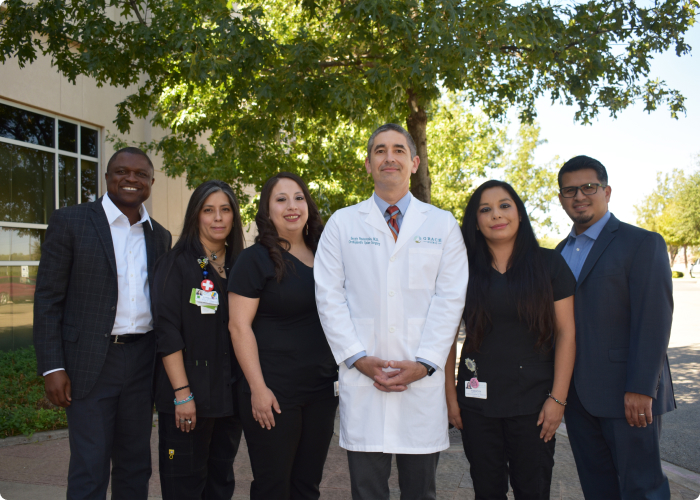
Dr. Nesterenko, Orthopedic Spine Surgeon in Lubbock, TX
Dr. Nesterenko is a fellowship-trained board-certified orthopedic spine surgeon with the Grace Spine Care Center. Our center is proud to offer a comprehensive approach for patients with various pathology of neck and back, from the initial evaluation, advanced imaging studies, physical therapy, interventional pain management, and spine surgery.
Comprehensive and Ethical Spine Care
We are proud to practice a comprehensive and ethical approach to our patients. We pledge to spend enough time with you, look for the causes of pain, and offer the least invasive yet effective treatments. Most patients will improve with simple modifications of their lifestyle, with physical therapy and chiropractics, or with simple medications. Some people may require more invasive treatments, like injections or surgery.
We will conduct a comprehensive interview and physical examination, obtain needed additional studies looking for causes of your pain, and discuss with you and your family the optimal treatment plan.
Even though we are primarily a surgical practice, we understand that surgery is not always the answer. By conducting a thorough review of your medical history, physical examination, and imaging studies, we aim to deeply understand and effectively treat the root cause of your pain.
Easy Access to Specialized Care
We recognize that while seeing a spine specialist may be nerve-wracking, it should not be difficult to arrange. We structured our practice to make it easily available. We don’t require any preexisting imaging to schedule an appointment with us. We will examine you and arrange for appropriate studies. The typical waiting time to be seen for the initial evaluation is about two weeks. If your primary care provider requests an urgent consultation, this can be accommodated within one or two days. We also respect your time and will do all we can to shorten the wait time in our clinic.
Moreover, referrals from other specialists or primary care physicians are generally not required. Contact us directly via our website or by phone (806-725-2740) for a prompt appointment.
Patient-Centered Approach
Every patient at our practice receives personal attention from Dr. Nesterenko. While we recommend following our established process of initial evaluation by an advanced practice practitioner and starting with non-invasive treatments, the final treatment decision always rests with Dr. Nesterenko. For those seeking a second opinion, you're welcome to schedule directly with the doctor. Bring any previous imaging for a more efficient consultation.
Feedback and Communication
Your feedback is invaluable in our mission to improve patient care continuously. Reach out to us through various channels, including our website contact form, phone, or for existing patients, MyChart. We pledge to find the optimal approach for your spine problem. While not every problem can be completely cured, we strive to find the best solutions for your back or neck pain.
Empowering Patients Through Education
We encourage our patients to stay informed. Look for answers online and then bring your questions and concerns to your appointment. We are here to provide clear and easy-to-understand answers.
Comprehensive evaluation and additional studies
We utilize various imaging and advanced study methods including X-rays, MRI, CT, bone density test, EMG, and nerve conduction studies to diagnose a variety of spine conditions.
Treated conditions
We primarily focus on degenerative conditions that affect many people during their lifetime, such as:
- Neck and back pain
- Disc herniation with radiculopathy (sciatica)
- Spinal stenosis and neurogenic claudication
- Compression of the spinal cord and myelopathy
- Degenerative disc disease, spondylosis, facet joint dysfunction, and spondylolisthesis
- Sacroiliac joint pain
- and others…
Treatment options
Our treatment framework progresses through five steps of increasing complexity and invasiveness:
- Lifestyle modifications and self-management options,
- physical therapy/chiropractic care,
- medications,
- interventional pain procedures, like injections,
- surgery.
We use a variety of surgical interventions ranging from minimally invasive surgeries to multilevel decompression and fusion procedures, from traditional open procedures to state-of-the-art minimally invasive techniques. Some of the more common surgeries we perform include:
- Laminectomy and posterior instrumented fusion in the cervical, thoracic, and lumbar spine
- Transforaminal lumbar interbody fusion (TLIF)
- Anterior and lateral lumbar interbody fusion (ALIF and LLIF)
- Cervical discectomy and fusion (ACDF) and disc replacement (CDA)
- Motion preservation procedures in the neck, such as cervical laminoplasty, foraminotomy, and disc replacement
- Minimally invasive posterior cervical fusion (CORUS)
- Sacroiliac joint fusion
- Microscope and endoscope assisted discectomy
- Complex revision procedures
- We use innovative equipment, including spinal endoscopy, intraoperative computer-assisted navigation, and robotics.
Call us or schedule an appointment through the online form. Let us help you get back to living a full, pain-free life.


